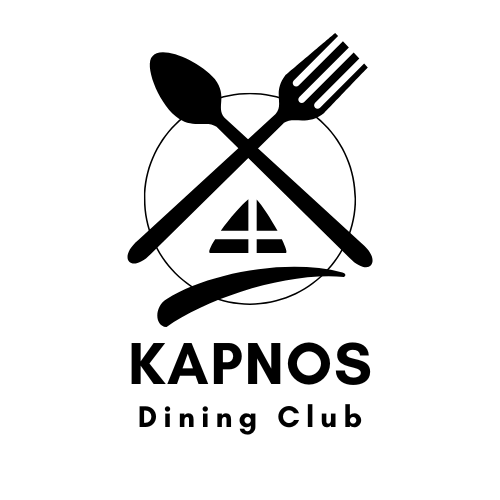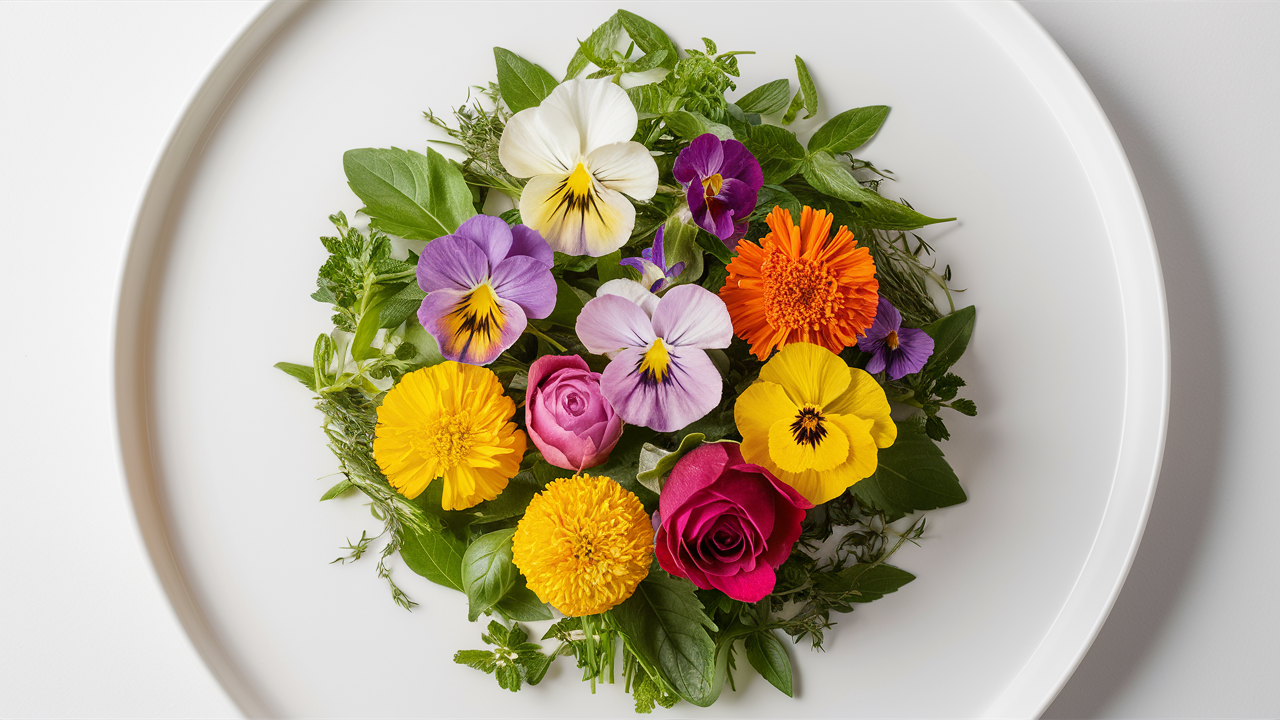A Guide to Selecting and Storing Edible Flowers
When choosing edible flowers, the most important things to consider are safety and quality. Only select those that have been marked as edible or culinary-grade; they should not have been treated with any toxic chemicals.
The petals should be vibrant in color with no signs of wilting or browning (although this may be a natural part of some varieties’ life cycle).
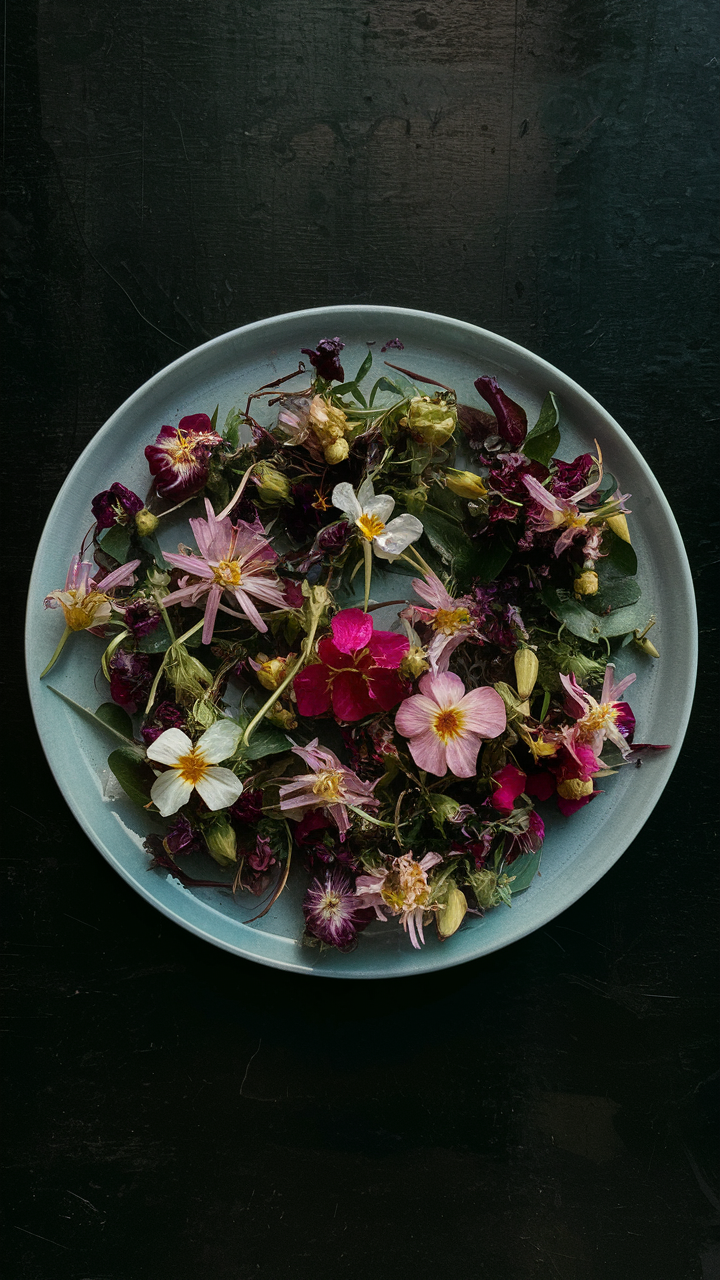
Once you’ve collected your blooms, take care not to let them wilt too soon by storing them properly.
Remove any green leaves or stems prone to wilting easily; these parts tend to release moisture which encourages decay when trapped against other petals.
Wrap freshly-picked flowers loosely in damp paper towels or place them inside containers that can be sealed tight enough for air exchange but won’t allow evaporation.
Most edible flower varieties prefer cool temperatures during storage so keep them refrigerated between 35-41°F (1-5°C) if possible – just don’t put fruit such as apples nearby because ethylene gas produced by ripe fruit accelerates the ripening processes thereby shortening shelf-life.
Also avoid exposing stored arrangements directly beneath bright lights or near excessive humidity levels since both these conditions promote spoilage instead of preservation.
Remember that not all flowers are safe-to-eat therefore always confirm their edibility before incorporating into recipes. Next up I’ll discuss how best prepare such types for use in dishes.
Kapnos always recommends following good hygiene practices, and cannot be held responsible for any adverse reaction to the flowers, as allergies are always possible.
How to Prepare Edible Flowers

Making edible flowers safe and delectable requires some preparation. You can toss them into salads, desserts or use them as garnishes. Here are some simple steps to help you:
1. Choose fresh flowers: Select vibrant, clean flowers that have just blossomed. Do not use flowers that have been sprayed with pesticides or other chemicals..
2. Gently wash the flowers: Rinse the flowers in cool water to remove any dirt or bugs. Be careful not to damage the petals while doing this..
3. Remove the stems and any bitter parts: Cut away the stems because they may give a bitter taste. Also, get rid of any unwanted part of the flower.
4. Pat dry: Dry with a paper towel: After washing and trimming, dry the flowers using a clean piece of paper towel which will absorb excess moisture and prevent wilting.
5. Store properly: If you do not intend to use them immediately then store in a container covered by damp paper towel then refrigerate so as to keep their freshness longer.
6. Enjoy in various recipes: When your edible flowers are ready for consumption; they can be used in various ways. Put them in salads, top dishes with them or mix into vinegars or oils for unique flavorings .
With these easy steps, you can use edible flowers and enjoy their great taste and look. Be creative and try these floral seasonings in your favorite dishes!
Kapnos always recommends following good hygiene practices, and cannot be held responsible for any adverse reaction to the flowers, as allergies are always possible.
My Top 10 Edible Flowers
So which are the best Edible flowers for you to use on your dishes at home?
Every flower included in this list has its own flavor and many applications within a culinary setting.
Ranging from bright purple lavender through to fragile rose petals, such blooms not only give meals an array of color but also offer various health advantages too..
1. Lavender

Good for their calming fragrance, lavender flowers can be used in both sweet and savory recipes. Add a floral twist to your baked goods, teas, or homemade ice creams by incorporating lavender into them.
2. Hibiscus

This tropical bloom is known for its bright colors and tart taste. It can be made into tea by steeping hibiscus petals in water or used to create jams, jellies and syrups.
3. Rose
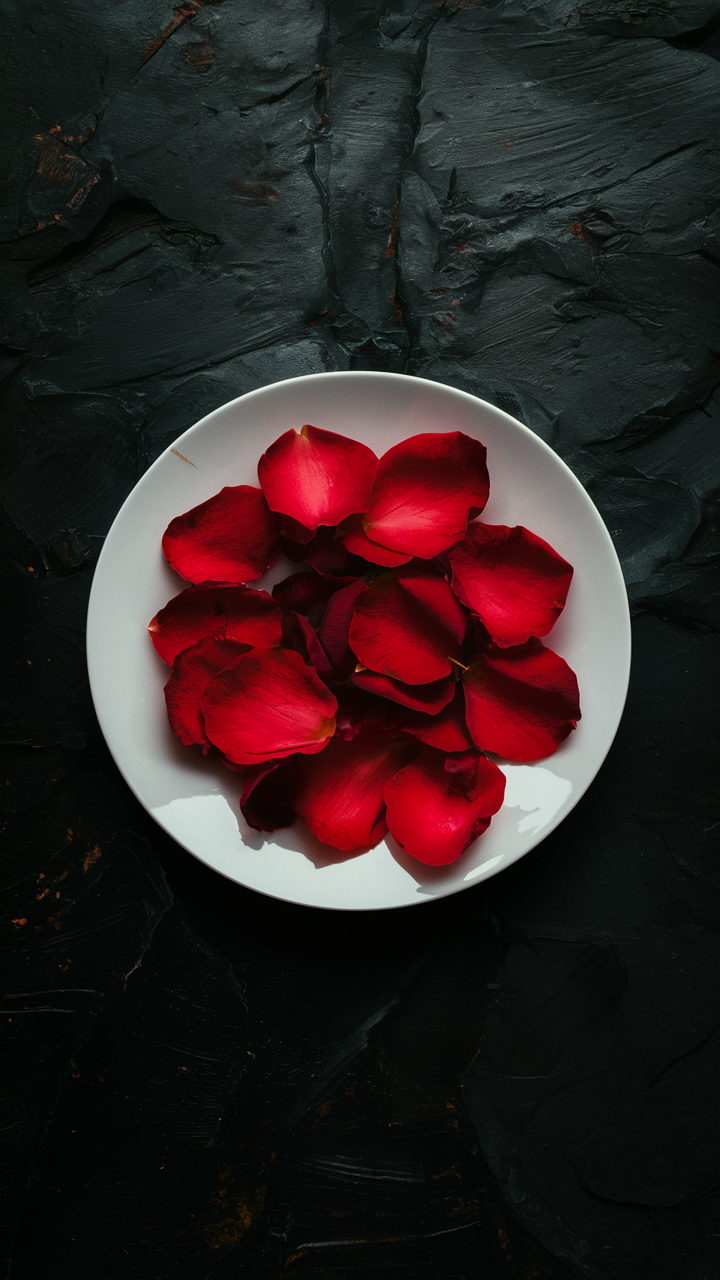
With its mild scent, rose petals are frequently utilized in desserts and drinks. You can make rosewater from them, as well as floral syrups or even chocolates with rose flavorings added in!
4. Pansy
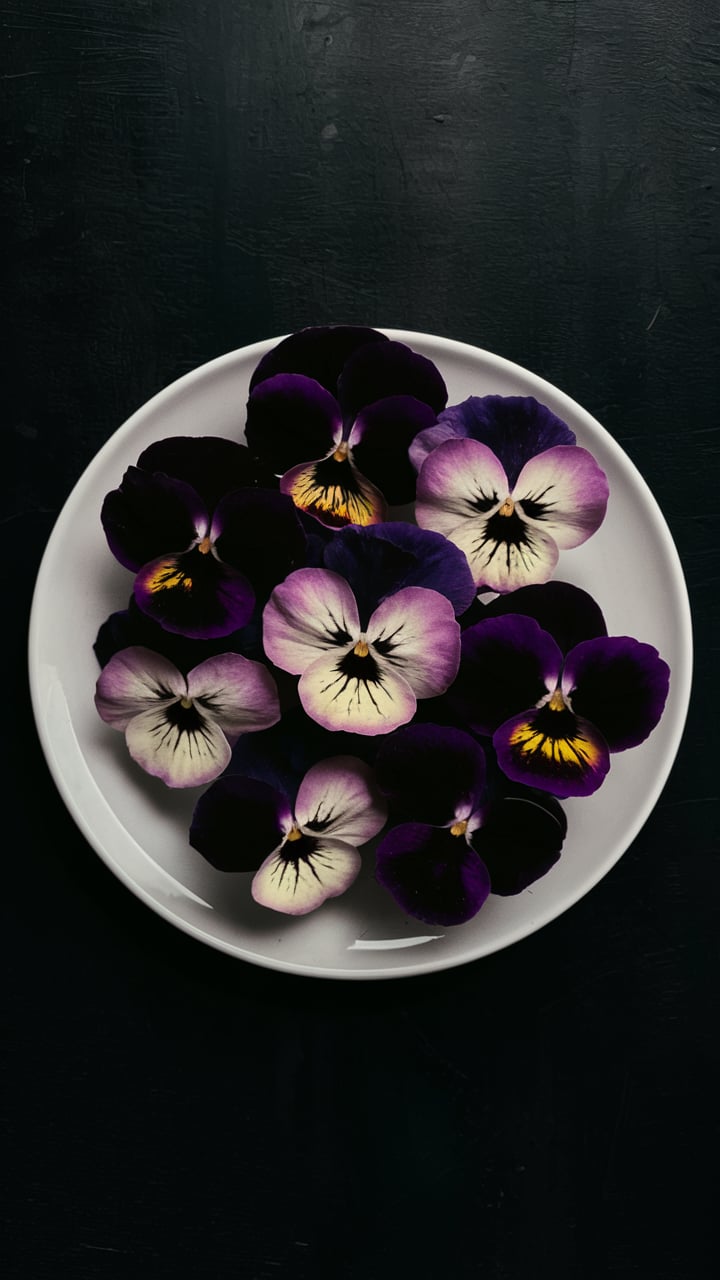
Use these vibrant edible flowers as garnishes for salads, cakes or cocktails; they may also be frozen into ice cubes which add an elegant touch when serving beverages such as champagne.
5. Marigold
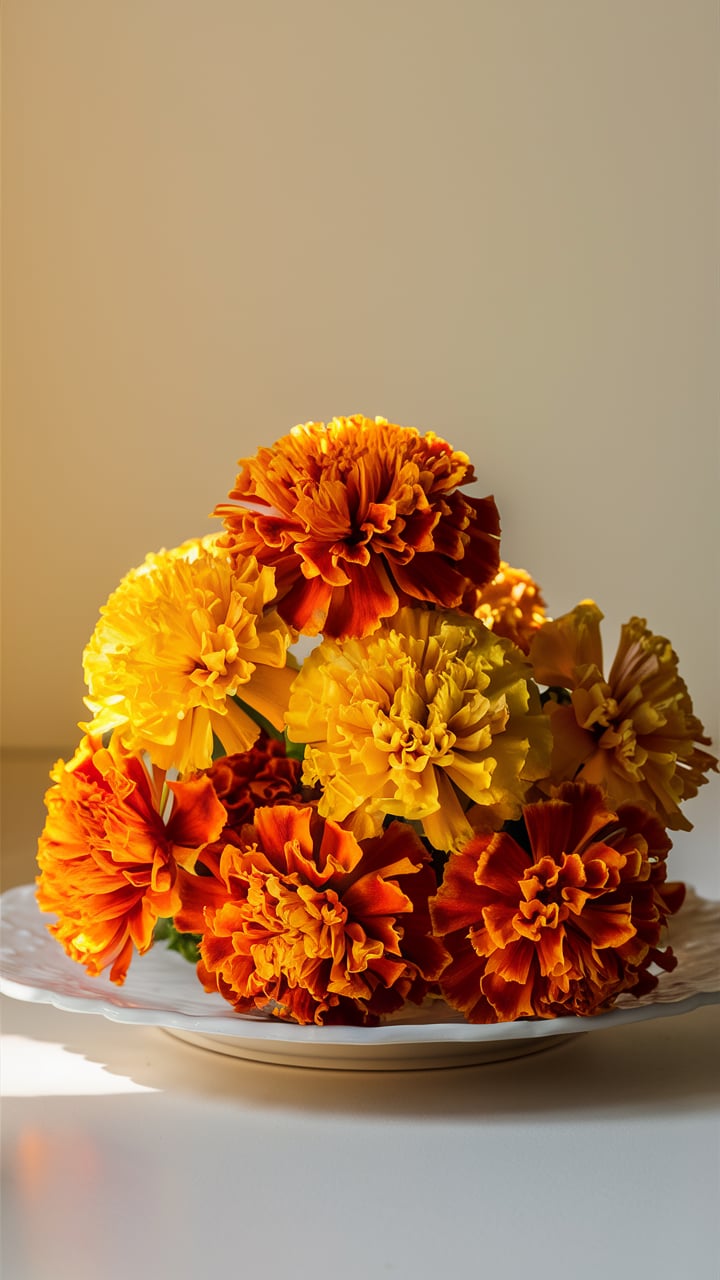
Apart from lending dishes a rich golden hue marigolds contain antioxidants too so try making herbal tea using marigold petals or adding them into soups/stews to intensify color while providing subtle taste undertones.
6. Nasturtium

Nasturtium blooms give food a tangy peppery kick and making it more interesting; chop some up and toss them through salads, put into stir fries or use whole stuffed with cream cheese mixed with herbs to create appetizers.
7. Borage
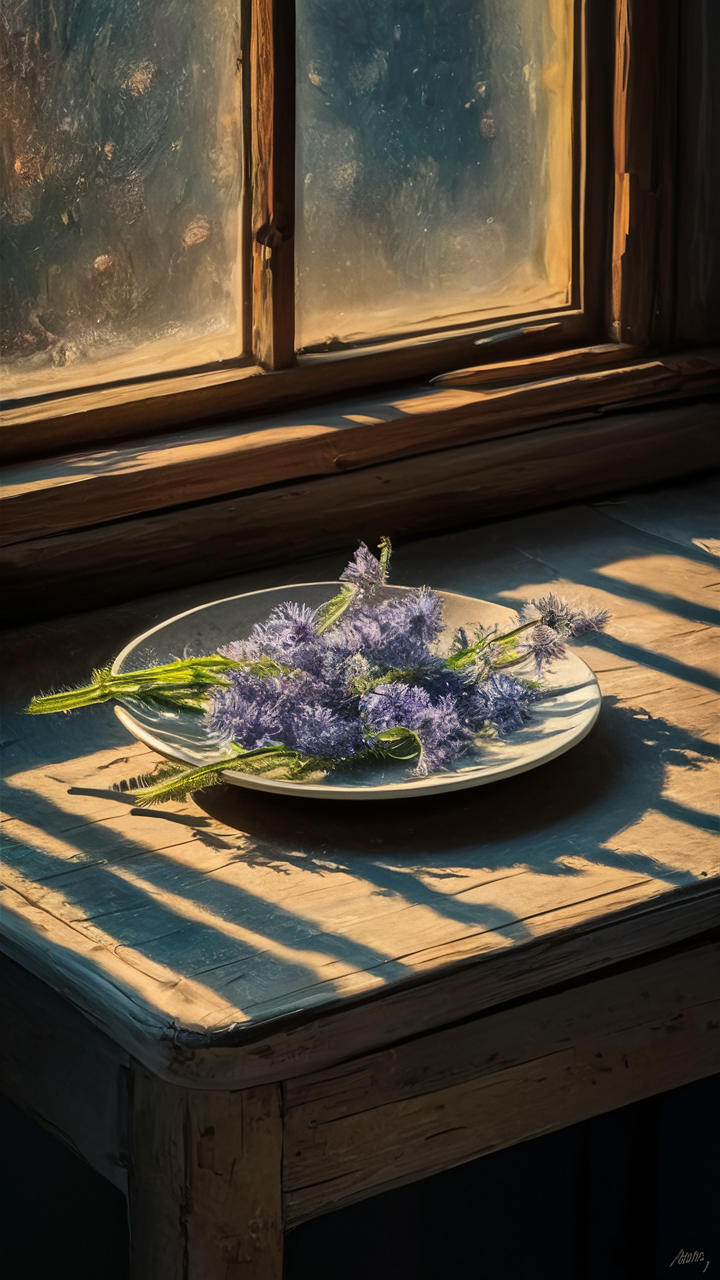
The delicate flavor of borage flowers tastes a bit like cucumber which means that they could be included not only in salads but also cocktails and they even work with ice creams .
Their vibrant blue petals bring out a visually stunning look to support presentations and they taste great.
8. Violet
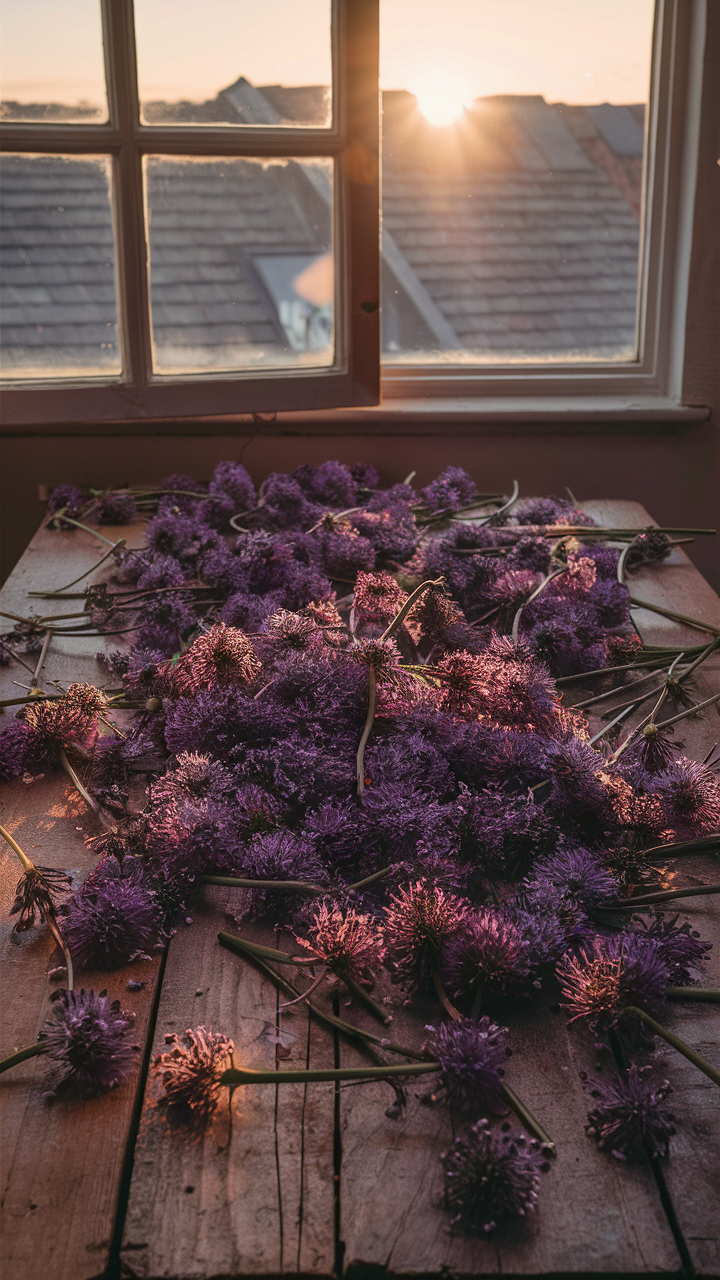
Violet flowers have got this lovely purple hue about them that is not only attractive visually but also has an understated floral note when eaten.
These can be used to decorate cakes, infuse vinegar or even make candied violets which look great as a garnish on desserts such as sorbets and ice creams.
9. Chive Blossom

Use the mild onion flavored chive flowers in savory foods like omelets, salads or infused oil/vinegar combinations for dipping breads into.
10. Dandelion

Being considered by many people as unwanted plants dandelions have got numerous health benefits too. Add their petals into salads, make tea out of them or try deep frying flower heads until crispy then eat them like chips.
These top edible flowers not only add flavor and visual appeal to your meals but also provide a unique opportunity to explore creative culinary uses.
Experiment with these flowers in your recipes and unlock a world of color and taste in your cooking.
Here are some more ideas in this video:
A List of Poisonous Flowers You Should Never Eat
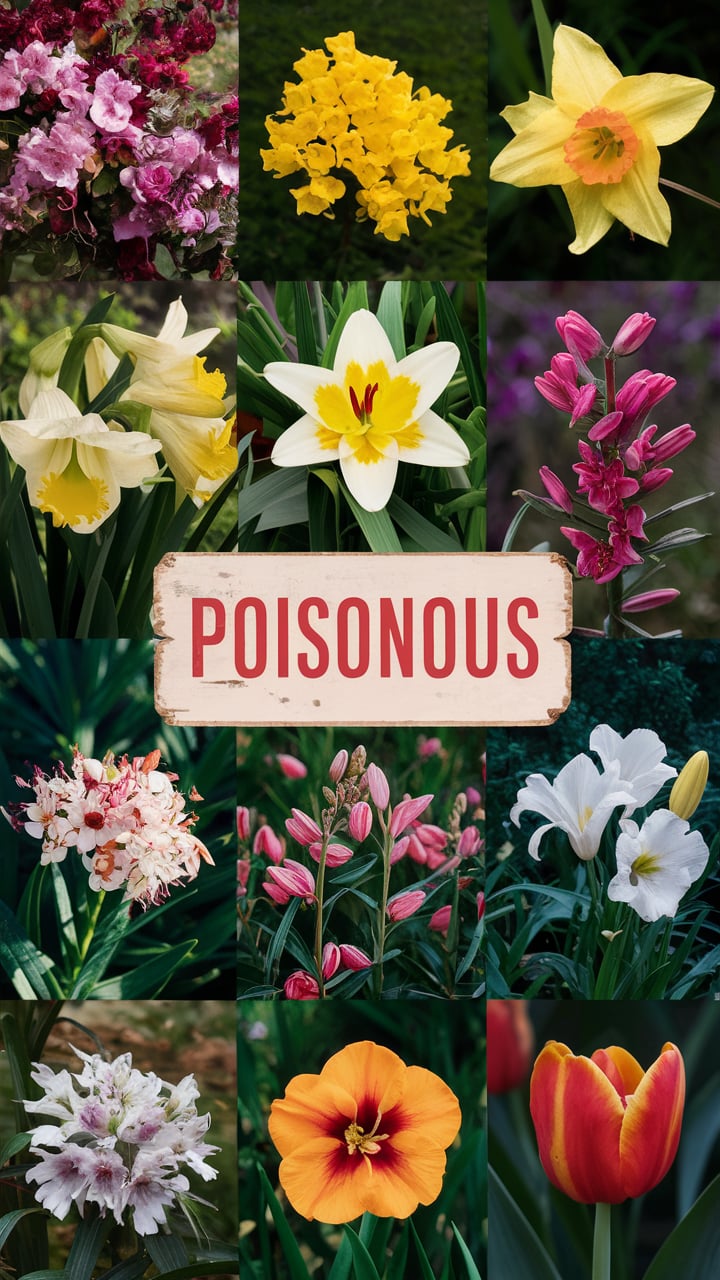
Eating flowers isn’t just an enjoyable experience but also a rewarding one. However, it’s important to identify which flowers are poisonous and should not be eaten.
Consumption of toxic flowers can lead to severe health issues; therefore, knowing the risks involved is crucial.
To keep you safe, I’ve made a list of poisonous flowers to avoid. This is just a list of common ones to avoid, and there are many others. The National Poison center has a full list:
- Azaleas
- Daffodils
- Lilies
- Oleander
- Rhododendrons
- Tulips
These flowers have toxic parts which may cause stomach upsets or damage organs when ingested excessively or prove fatal if consumed in large amounts.
The level of toxicity varies depending on flower type and part eaten.
If unsure whether a certain flower is edible or not, it’s better not to eat it at all. Besides, always purchase such flowers from trusted sources so as to guarantee their safety.
How to Shop for Edible Flowers
Shopping for edible flowers is an adventure itself; they can either be grown at home or purchased from local markets and online platforms. Below are some tips that will help you select the right kind of blooms for your cooking needs. We highly recommend buying from retailers to insure safety.
1. Choose reputable sources:
It is advisable to buy these kinds of flowers from reliable sellers. Look out for farmers’ markets within your locality or specialty stores dealing with such products; alternatively consider checking on various websites selling them online where there’s usually wide range available comprising fresh ones too. We would recommend:
https://gourmetsweetbotanicals.com/collections/edible-flowers
https://cherryvalleyorganics.com/collections/edible-fresh-flowers
But Amazon also sells available for next day delivery for instance here.
2. Check for organic and pesticide-free options:
If you want to use organic ingredients, look for organic and pesticide-free edible flowers. These flowers are grown without harmful chemicals. They make a healthier addition to your dishes.
3. Consider seasonality:
When purchasing edible flowers, it is important to think about the season.
There are certain periods when some blooms only thrive best; therefore if possible always go for those which were harvested recently this guarantees freshness.
4. Examine the flowers:
Before buying, check the flowers for freshness and quality. Look for bright colors, full petals, and no wilting or browning. Stay away from flowers with damaged petals.
5. Read labels and descriptions:
When buying online, read the labels and descriptions carefully. They tell you about the flower types, flavors, and any allergens. Choose flowers that fit your taste and dietary needs.
6. Store them properly:
After buying, store your edible flowers right to keep them fresh. Keep them in the fridge, wrapped in a damp paper towel or in a container with damp paper towels. This keeps them hydrated and fresh longer.
Follow these tips to shop for edible flowers easily.
A Colorful and Nutritious Addition to Your Diet
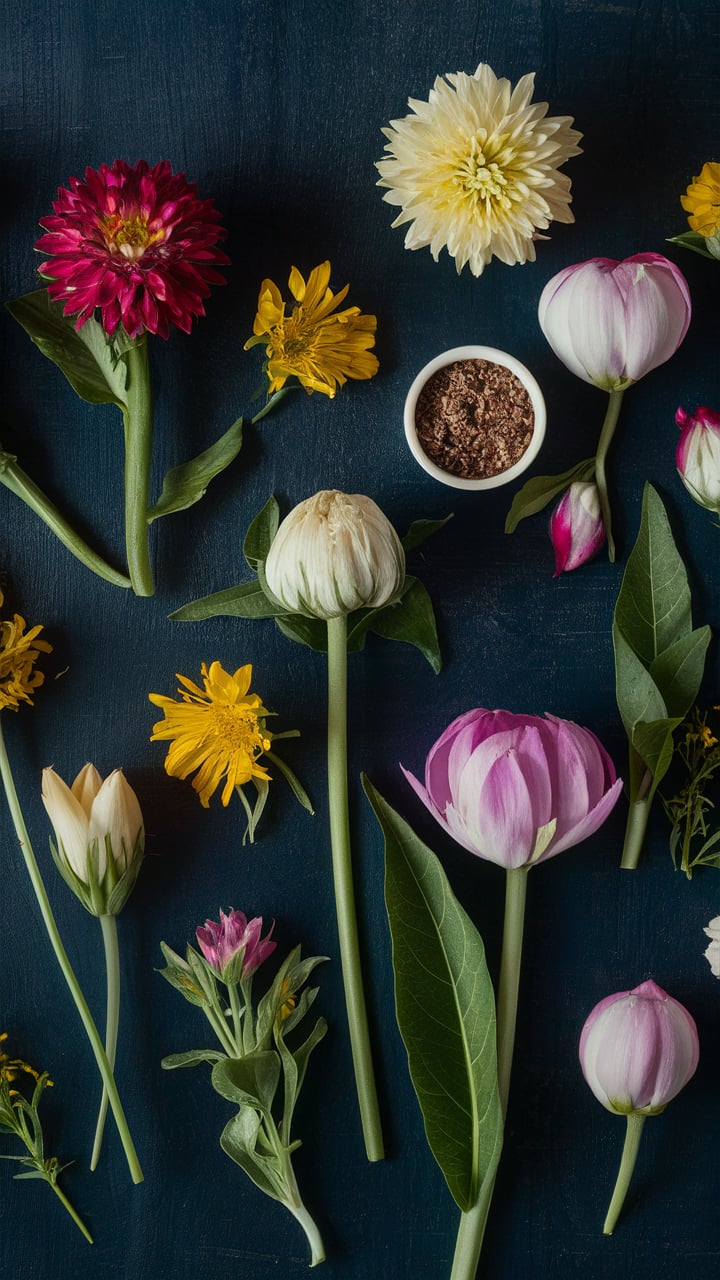
Edible flowers have been used for centuries not just for their aesthetic appeal in culinary presentations but also for their various health benefits. Incorporating these blossoms into your diet can offer a range of nutritional and medicinal advantages. Check out Healthline for a full list, but as a summary:
Vitamins and minerals are abundant in many edible flowers. Nasturtiums, for example, contain a lot of vitamin C that is crucial for immunity and skin health.
They also provide iron and manganese required for blood health and metabolism too. Similarly, hibiscus flowers are rich in antioxidants that combat oxidative stress by reducing inflammation inside the body.
In addition to that, another importance of edible flowers is their antioxidant contents. Some blossoms like viola tricolor/ wild pansy has flavonoids and carotenoids which are strong antioxidants.
These compounds can protect cells from damage thereby lowering risks of chronic diseases such as heart disease or cancer among others hence promoting general well-being and prolonging life span.
Equally important to note is the fact that even edible flowers do have meditative virtues. For example lavender helps calming down stress while chamomile petals help someone sleep well at night and improve digestion especially when ingested through tea .
On the other hand, roses’ petals contain anti-inflammatory substances as well like antiseptic agents hence can be used to cure minor wounds plus skin irritations.
Also including these kinds of plants in your diet will enhance good digestion.
Dandelions act naturally like diuretics so they help cleanse toxins out of our systems resulting to reduced puffiness too.
Furthermore there are positive effects on heart from eating edible flowers because tea made from hibiscus assists reducing cholesterol levels as well as hypertension.
Have you used Edible flowers in meal prep? Let us know in the comments?
